I met Laurie, a single mom, and her daughter Ava on a blustery Sunday morning at the mouth of Provo Canyon. They’d booked a half-day of guided fly fishing, and neither of them wanted to reschedule even with the snow forecast for mid-morning.
I don’t mind fishing – or guiding – in inclement weather, but I like giving my clients a choice. They’re paying a fair amount of money for an experience, and it’s my job to make it a good one. Once we’d all said our hellos, we loaded into vehicles and set off for the river.
The Provo isn’t a terribly technical river, but the trout get lockjaw often. It’s a result, I think, of the river sustaining more fishing hours than any other in Utah. Patience, more than skill, wins out on the Provo.
Which is why I was a bit nervous, since Laurie made it clear the priority for the day was getting Ava into fish. Ava was nine years old, hadn’t ever fished before, but seemed more eager than I expected. But I know from experience how quickly eager anticipation dissipates when the fishing isn’t fast and easy.
It started snowing as we walked from the parking area, down a still-frozen hill and across railroad tracks to the river. It was late February, too early in the day for midges to be hatching, and too windy to fish on top even if they did.
“It’s gonna be a nymph day,” I said to Bridger Lyons, my fishing buddy and business partner. He wanted to learn the ropes for guiding walk-and-wade trips, so he was along for the half-day trip. “Rods are already rigged with Frenchies and midges, but I have more if you need them.”
I handed over two of the four rods I’d rigged up prior to the trip, and Bridger took Laurie upstream 100 feet from where I set up shop with Ava.
“Have you ever fished before?” I asked.
She nodded. “Yeah, I’ve fished with my grandpa.”
“Did you use one of these?” I held out a fly rod.
“Nope.”
The honesty of a kid was refreshing, after so many trips listening to adults tell me they had fly fishing experience, when they clearly didn’t.
“Well, it ain’t that different from regular fishing,” I said. “What do you see that’s different about this setup than a regular pole?”
Ava looked thoughtful. She pursed her lips. Then, she grabbed the fly line. “This stuff is really thick.”
I nodded, excited. “Yep! And what about this?” I held up the three flies tied on the end of 5x tippet.
“Those are tiny!” She exclaimed.
“That’s why the line is heavy. Instead of just throwing the rod and letting a heavy lure pull our line out, we’re gonna try to throw the line instead. Does that make sense?”
Ava nodded, and I handed her the rod. For the next ten minutes, I coached her through the fundamentals of a roll cast. First, I showed her what one should look like, all the while going back to the core principle we’d discovered together – that the key to fly fishing is to remember that you’re casting the line, not the fly.
Her first few casts looked like what I reckon everyone’s first casts do. She tried to cast with two hands, the rod held over one shoulder, pushed forward with a desperate heave.
The line piled in a mess at her feet.
“Not quite,” I said. “Remember, the line is the heavy thing. So you have to let the rod throw the line. Don’t try to force it.”
She nodded, determined to get it right.
Within 20 minutes, she had a solid roll cast going on, and only needed minimal reminders about keeping the rod tip high, aiming where she wanted her bobber to land, and stripping in slack line.
She’s picking this up really fast, I thought. I glanced upstream to see Bridger was having similar success with Laurie. They both are.
The water was low and clear, and I saw a few fish holding tight to the bottom in front of Ava. They moved every few minutes, feeding lazily. I asked Ava if I could “check” something on her rod. I flipped the nymph rig in front of those fish, saw one eat, and inconspicuously set the hook. Then I handed the rod to Ava.
“Hey, where’s your bobber?” I asked her.
The indicator was underwater and shooting upstream.
“Set the hook!” I yelled.
She set the hook and stripped in line, looking all the while like a longtime fly angler. A few reminders to keep the rod tip high, and a quick scoop of the net later, and Ava couldn’t wait to touch the fish.
We talked about catch-and-release, about the best way to remove hooks from trout, and how to identify the fish she’d caught. After a quick photo shoot, the brown trout swam back into the river.
Alright, we’re on the board, I thought. That first fish on a guide trip is always the best one, because it means you won’t be skunked. And, you don’t have to try to remember obscure facts about the area you’re fishing to keep clients interested – and believing that you know what you’re doing.
Now that Ava had a fish under her belt, I switched with Bridger. As I worked with Laurie, I kept looking downstream. Bridger had Ava wade into deeper water – not dangerous, but knee-deep instead of ankle-deep – and cast across a current, to a small eddy. A presentation I’d considered for her, but dismissed as too technical.
Then Ava’s indicator shot under, and she reeled in a 15-inch rainbow.
For the rest of the trip, Ava consistently put fish in the net. By the end of our four-and-a-half hours, she’d caught eight trout and lost at least that many.
Bridger worked with her almost the entire time.
What I realized, after Laurie and Ava left and I had time to reflect on the day, changed the way I’ve approached not just guiding kids, but teaching in general.
Give them room to succeed, and only intervene when necessary. They’ll figure it out on their own.
It’s a fine line between being a good teacher or too overbearing. As a sixth-grade teacher myself, it’s hard to not want to hold my students’ hands every step of the way.
I made that mistake with Ava. And it wasn’t until I watched Bridger guide her that I realized what I’d done.
The common saying in teaching is that we don’t want to give kids too much rope to hang themselves with. That’s a bad mindset, because we’re assuming that giving kids room to try equals giving them room to fail.
The opposite is true, and that’s the single-greatest obstacle us as adults need to overcome when we’re teaching kids to fly fish. Whether you’re a guide or a parent, don’t be afraid to give the kids the room to succeed.




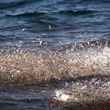
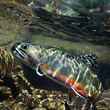





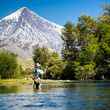




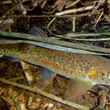
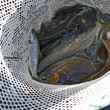



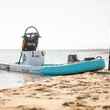




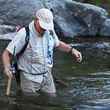


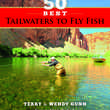
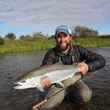
Comments
DAVE rOOTES replied on Permalink
That's a nice story. Well done.
Pages